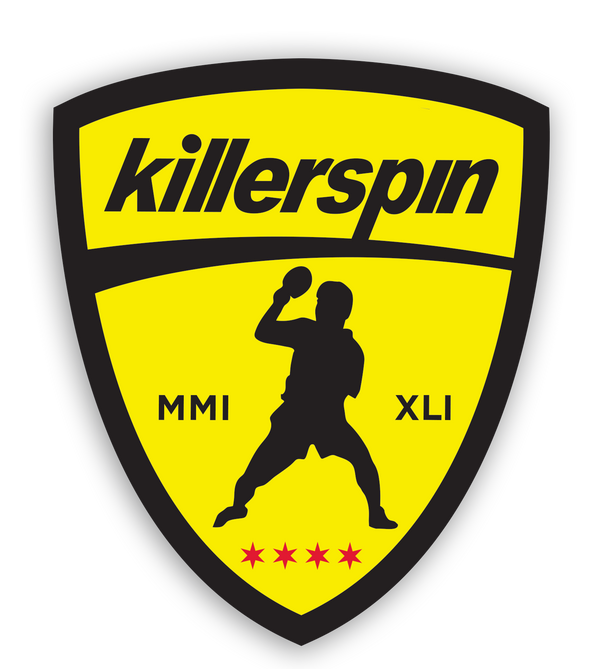
Tricks to understanding spin in table tennis, and applying it
Table tennis is a pretty simple sport in the beginning. You hit the ball back and forth, it moves and bounces as expected, and it’s all fun and games. But like many sports and games, table tennis has a steep and nuanced learning curve between beginner and pro. One of the most important and challenging lessons to learn along the way is how to see, counter, and create spin.
Why we use spin in table tennis
Spin is an essential part of table tennis and adds an interesting layer of strategy and flair. Spin can make the ball move in ways that seem impossible. It can thrill audiences and frustrate opponents. Topspin can make it appear as if a ball is magnetically attracted to the table. If not countered, sidespin can make the ball leave an opponent's paddle at astonishing angles. And backspin can make the ball seem to slide on the table top like it's made of ice.
Mastering spin can seem a daunting task for a beginner, but I've asked our team of coaches to help us with a few tips that can set us on the way toward adding another element to our game.

Understand the principles of returning spin
There are many different types of spin, but they can all be divided into three categories: topspin, sidespin and backspin. I asked Killerspin coach Biba Golic about the basics.
"Reading and returning spin will take some practice to perfect, but once you get a grip on how it’s done you'll start making the necessary adjustments without thinking. It’s all about muscle memory!"
She recommends having an experienced player or coach introduce you to the three types of spin. Have your partner serve you balls with consistent spin (Biba recommends starting with underspin), and do your best to return them in play. Pay attention to how the ball leaves your paddle and make adjustments to your paddle angle to correct for the spin's affect.
"Adjusting for spin is mostly about your racket angle." Killerspin coach Felipe Morita tells me as I try returning some of his underspin serves. "Shots with underspin will go down off your racket, so you'll want to tilt up a little to adjust."
Topspin shots will pop up off your paddle and sidespin shots will shoot out to the side. Practice returning a few examples of each spin type to get a feel for how to adjust your racket angle to keep your returns low and on the table.
After a few shots, you’ll find the best angle and then just repeat that until it comes naturally. With practice, you'll get even better at recognizing the power of the spin on shots and be able to play even more accurate returns.
Keep in mind that the type of rubber on the paddle that you use also affects how significantly spin will influence the direction of your shots, so make sure that you practice returning some spin shots whenever you get a new paddle or replace your rubber.
In the end, nothing will teach you more about returning spin shots than practice.
In cases like these, a Robot comes in really handy! Most have settings that let you practice against each type of spin, and will play consistent shots so you can fine-tune your stroke and angles. Then you can practice for hours and not exhaust your friends!

Master the game of spin!
The most common type of shot with spin is the forehand topspin shot. It can be played with a lot of power and curves down toward the table.
Therefore it is the primary offensive shot for most competitive players.
Here are some quick tips for playing a forehand topspin shot:
- Always look at the paddle as an extension of your arm
- Stay one forearm away from the end line of the table
- Keep your core low
- Keep your arm straight, and move it forward and upward
- Move your hips in the same direction as your hitting arm
Felipe recommends mastering topspin with your forehand before moving on to try the backhand version. The backhand is a little more challenging to master, but has become more common in modern ping pong as players have gotten more athletic and hit the ball harder.

Building a Bag of Tricks
As you get the hang of adjusting your racket angle to account for incoming spin, and have mastered your own, powerful topspin shots, the next step will be learning to work a variety of spin into your game, and to adjust your play for the spin combinations of different opponents.
"Every player will play their own unique shots," Felipe explains, "I learned the most about spin by practicing and playing with different players."
"The best part is that anyone can learn to play with spin. It just takes practice!"
Biba added that it helps to have a good, clean paddle with a tacky rubber. And both Biba and Felipe agreed that learning to play with spin and experimenting with different shots is one of the most fun parts of table tennis. They recommend grabbing a friend and trying to play some wild curves and bounces next time you #UnPlugNPlay.
Have fun!
